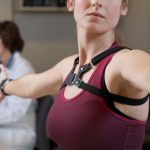Technology in Parkinson’s Disease
Recently, the International Parkinson and Movement Disorder Society assembled a task force of some of the world’s top clinical researchers, engineers, and leaders in the device and biopharmaceutical industry. The team, which included APDM’s Dr. Fay Horak, was tasked to assess the challenges and opportunities of technology for Parkinson’s disease.
The team outlined their findings in a recent publication, Technology in Parkinsons Disease: Challenges and Opportunities (Espay, et al.). In the last 10 years, applications of technology for Parkinson’s disease have sky-rocketed, providing a new insight into the disease and deeper understanding of its impairments. Sensors (like the APDM Opal), mobile communication, and advanced objective analytics have the potential to completely change the landscape of Parkinson’s analysis and approach to care.
Despite this advancement, clinical scales and patient-reported outcomes continue to be the primary source of assessment in PD care and research. Given this growing awareness, the move towards more objective measurement is taking hold, and advantages are coming into the spotlight. Objective measurement has shown to be much more sensitive and accurate, capturing the full complexity and diversity of PD symptoms, in and out of the lab. For example, APDM’s Opals have the ability to log data on board the sensor for up to 16 hours, providing valuable information about a subject’s gait and balance patterns throughout the day, and seeing the influence of medication and interventions in real time. This can even give caretakers and researchers insight into causes of a fall or freezing of gait. The task force team acknowledged that this objective measurement could essentially be the link to close the loop and address critical knowledge gaps in the world of PD.
Opportunities in the area of technology for PD include more customized and individualized care to subjects based on objective measurements of dysfunction in other aspects of life that could influence therapy or care. Closed-loop feedback is another opportunity, potentially providing proprioceptive cues to patients with freezing of gait, for example. Real-time symptom tracking, remote monitoring, and greater subject engagement were among the other opportunities found by the team.
APDM’s Opal sensors and accompanying software, Mobility Lab, provide excellent opportunities for objective measurement of PD. With Mobility Lab’s automatic data interpretation, the guesswork is taken out of analysis, allowing more time for intervention and care. More accurate, individualized care can be achieved, as well as continuous recording of ADLs.





